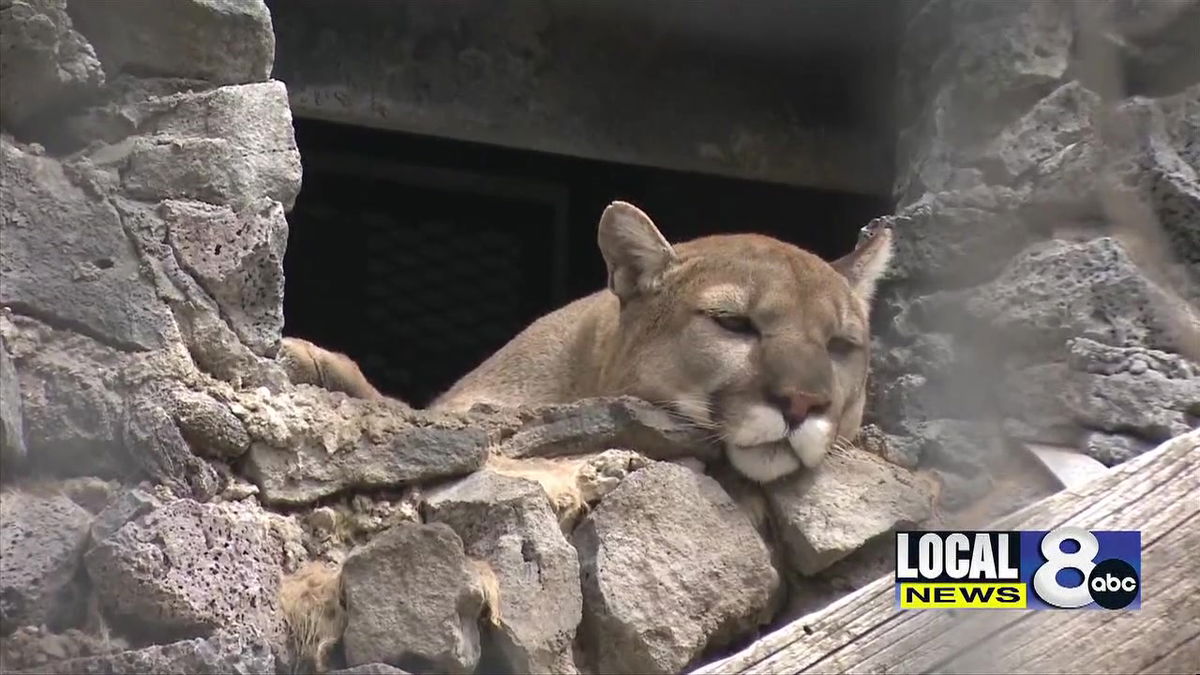F&G receives multiple reports of mountain lion in Boise

BOISE, Idaho (KIFI) - On Monday, Idaho Fish and Game’s Southwest Region Office received multiple reports through Ada County Dispatch of a mountain lion moving along the Boise River corridor in the City of Boise, between the 800-block of East Park Blvd. and the Railroad Trestle Bridge near Rotary Park.
Fish and Game has not yet confirmed the sightings. An enforcement officer responded to the area on Monday afternoon to investigate.
Even if the reported sightings are confirmed as a mountain lion, wildlife managers do not believe there is an imminent risk to public safety. However, Southwest Region wildlife staff are asking area residents and recreationists on the Greenbelt to be vigilant – particularly between dusk and dawn – and to report any mountain lion sightings in the area by calling the Southwest Region Office at 208-465-8465, Monday through Friday during business hours, or 208-854-8964 after business hours.
Ada County Dispatch received the first report of a mountain lion sighting at 4:43 a.m. on Oct. 17, in a parking lot between a building on the 800-block of E. Park Blvd. and the Boise River Greenbelt. Ada County Dispatch received two additional reports, each just after 2:30 p.m., of possible mountain lion sightings between N. Americana Blvd. and the Railroad Trestle Bridge.
Mountain lions frequently use river corridors as travel routes. While they are not necessarily a common sight in Boise, mountain lions will occasionally travel through the Boise River corridor and be spotted in town. Problems rarely arise as long as they keep passing through and exhibit “normal” mountain lion behavior.
Most of Idaho is home to mountain lions, and regardless of where you are, it is good to keep the following safety tips in mind:
Personal Safety
Wildlife managers agree that if a person is in close proximity to a lion, meaning they see it, they should:
- NEVER run away from a mountain lion. The lion’s instinct is to chase and ultimately catch what they perceive as a potential prey.
- NEVER turn your back on a lion. Always face them while making yourself look as large as you can. Yell loudly, but don’t scream. A high-pitched scream may mimic the sound of a wounded animal.
- SLOWLY back away while maintaining eye contact with the lion.
- Safety equipment you may choose to carry could include bear spray, a noise device, like an air-horn, and if you walk in the dark, a very bright flashlight.
- If you are attacked, fight back!
Remember to use all of your senses to detect if a mountain lion is near. Using a light to help you see your surroundings is very important, both in your yard, or as you walk in your neighborhood. If you run or bike for personal fitness, use caution when wearing headphones which take away your ability to hear if a lion, or any other wildlife, is giving you signals that you’re too close.
Pet Safety
Mountain lions are opportunistic predators, meaning they don’t know when their next meal will happen, and will often attempt to take prey when it presents itself. A lion may perceive a pet as prey. To keep pets safe, owners are strongly encouraged to follow these safety tips:
- Keep your pets on a leash.
- Watch the pets’ behavior, since they may sense the lion before you can actually see them.
- Do not feed your pet outside, or leave their food dishes outside. The mountain lion will not typically be attracted by the food, but the food could attract other wildlife that could be looked at as prey by a lion.
- Before letting your pet outside, turn on lights, make noise and look to ensure the yard is clear of wildlife. Do not assume that a privacy fence will exclude a mountain lion from your yard.
- Accompany your pet outside if possible.
Homeowner Safety
By nature, mountain lions are shy and will make every effort to avoid contact with humans. Homeowners can do several things to make it less likely that a mountain lion would pass through, or live near their homes and neighborhoods. These include:
- When leaving your house, be aware of your surroundings. Look and listen for signs of wildlife near your house.
- Do not feed wildlife! Elk and deer are the preferred prey for mountain lions. Unnaturally feeding elk and deer will bring in predators to the feed site.
- Strongly encourage your neighbors to not feed elk and deer. To effectively keep predators out of neighborhoods everyone must do their part.
- Do not leave your household garbage outside and unsecured. As with pet food, the garbage will not typically attract a mountain lion, but it might attract other wildlife that would be considered prey by a lion.
- Ensure that a lion cannot get under your patio or deck. These spaces can be a perfect location for a day-bed.
- Place covers over window-wells which can also be a place for a lion to use as a day-bed.
- Install motion-sensor lights which may discourage wildlife from staying in your yard. Lights can be directed to minimize impact on your neighbors.
